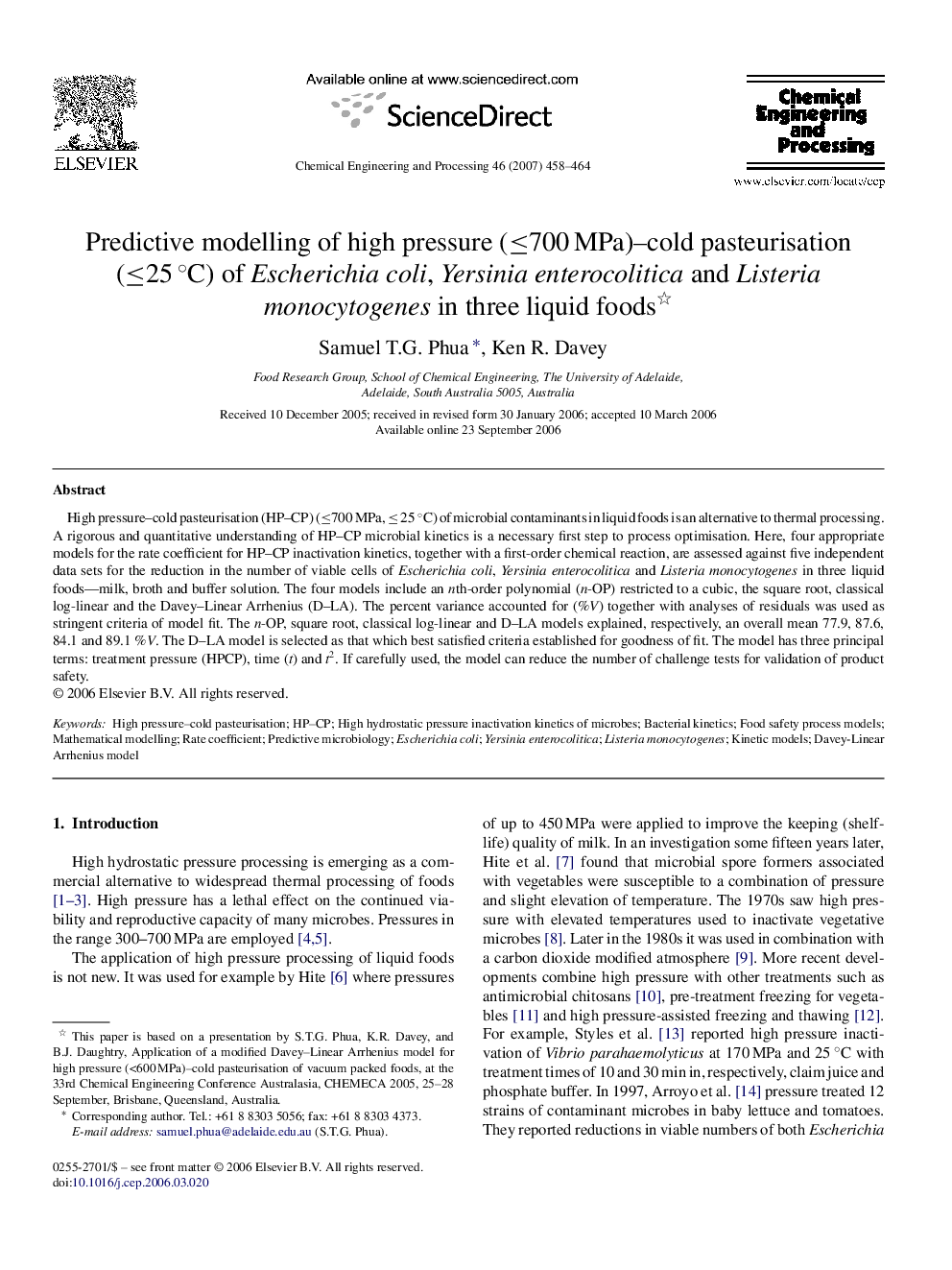| Article ID | Journal | Published Year | Pages | File Type |
|---|---|---|---|---|
| 688321 | Chemical Engineering and Processing: Process Intensification | 2007 | 7 Pages |
High pressure–cold pasteurisation (HP–CP) (≤700 MPa, ≤ 25 °C) of microbial contaminants in liquid foods is an alternative to thermal processing. A rigorous and quantitative understanding of HP–CP microbial kinetics is a necessary first step to process optimisation. Here, four appropriate models for the rate coefficient for HP–CP inactivation kinetics, together with a first-order chemical reaction, are assessed against five independent data sets for the reduction in the number of viable cells of Escherichia coli, Yersinia enterocolitica and Listeria monocytogenes in three liquid foods—milk, broth and buffer solution. The four models include an nth-order polynomial (n-OP) restricted to a cubic, the square root, classical log-linear and the Davey–Linear Arrhenius (D–LA). The percent variance accounted for (%V) together with analyses of residuals was used as stringent criteria of model fit. The n-OP, square root, classical log-linear and D–LA models explained, respectively, an overall mean 77.9, 87.6, 84.1 and 89.1 %V. The D–LA model is selected as that which best satisfied criteria established for goodness of fit. The model has three principal terms: treatment pressure (HPCP), time (t) and t2. If carefully used, the model can reduce the number of challenge tests for validation of product safety.
